![]() Some of the famous features of the Peak District are not really peaks at all – but there is nothing more scenic than a wander along one of the ‘Edges’.
Some of the famous features of the Peak District are not really peaks at all – but there is nothing more scenic than a wander along one of the ‘Edges’.
These sheer cliffs, scattered along the eastern and western edges of the National Park, are made of beds of angular, coarse-grained sandstones, locally known as the Millstone Grit. They form part of a Middle to Late Carboniferous (325–315 million year-old) sequence of sandstones and siltstones that were deposited on top of the limestones that now outcrop in the middle of the Peaks (where the porous bed of the River Manifold is located), as rivers flowing south from what is now Scotland build a large delta out into a shallow, tropical sea[1]. The harder gritstone layers have eroded more slowly than the surrounding siltstone units and the underlying limestone, creating the rock-climbers’ paradise we see today.
Exploring these cliffs, and the more eroded tors scattered around on top of them, you can also see a lot of very impressive cross-bedding – the preserved signature of the currents that shaped and built that Carboniferous delta.
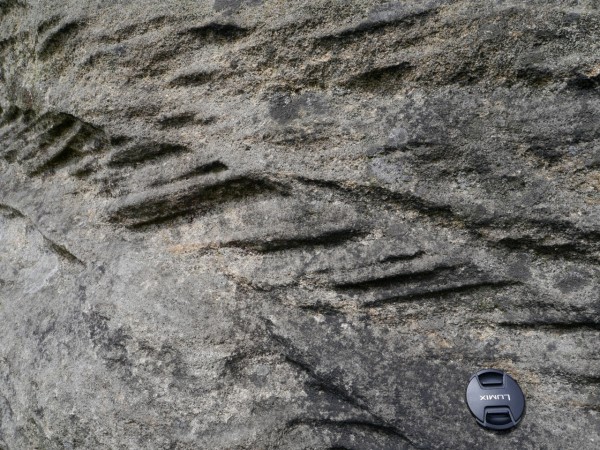
A closeup of one layer of crossbeds in the Millstone Grit – you can just about see some of the coarse sand grains that this unit is composed of. Photo: Chris Rowan, 2014.
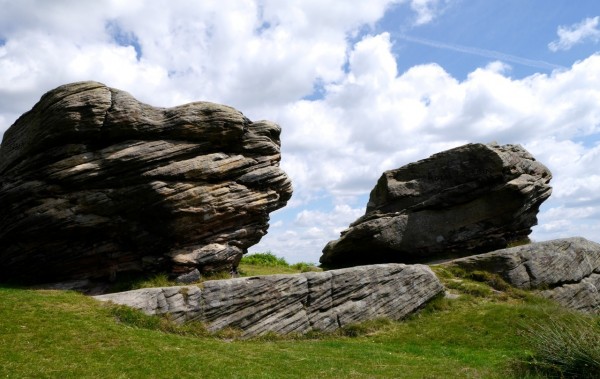
Cross beds in one of the more eroded tors on top of Birchen Edge. These tors actually form part of a monument to Lord Nelson erected in 1810. Photo: Chris Rowan, 2014.
-
If you want a bit more geological info, this fact sheet (pdf) is a good starting point ↩

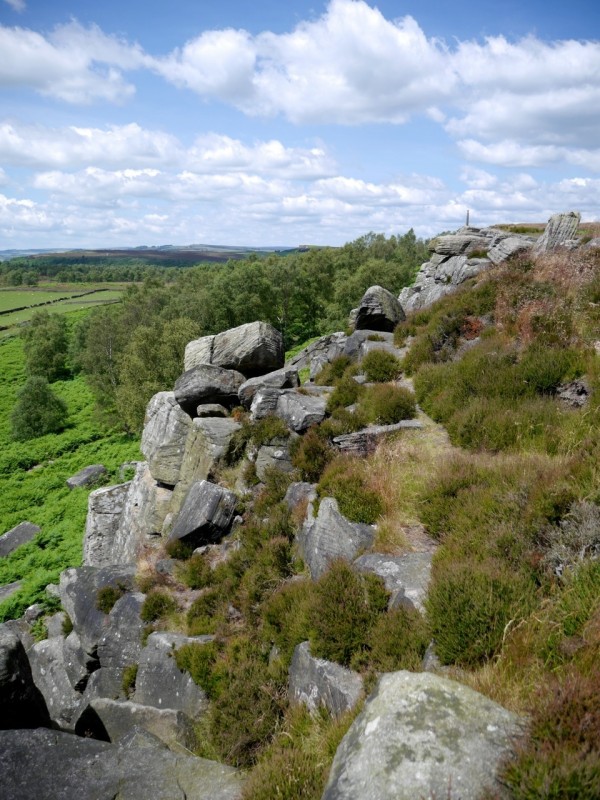
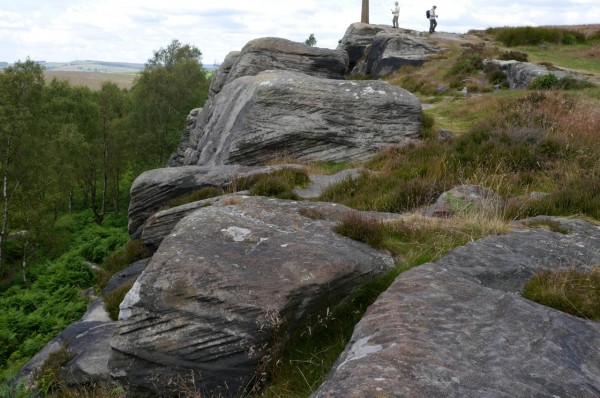
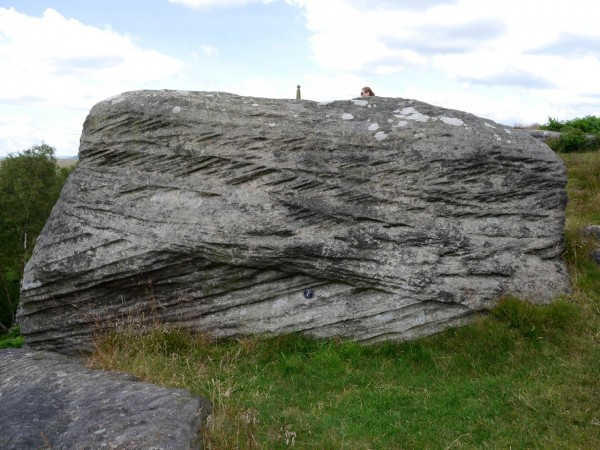
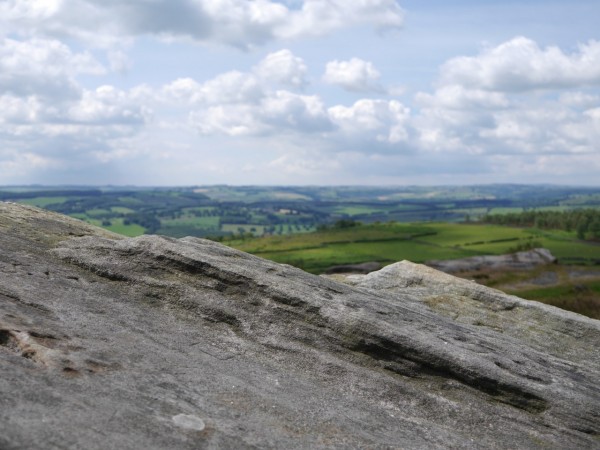


Comments (1)